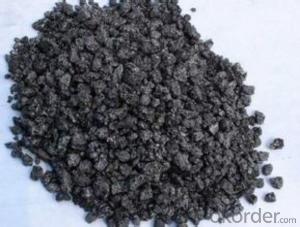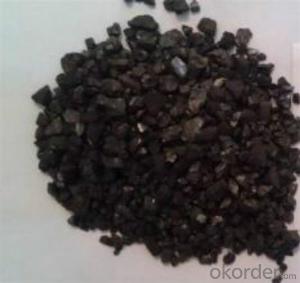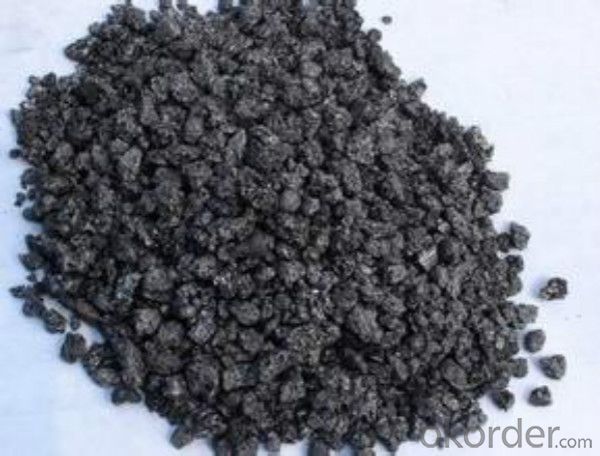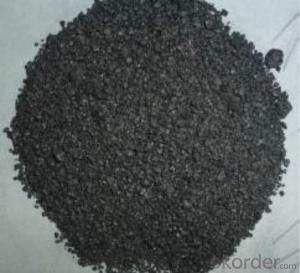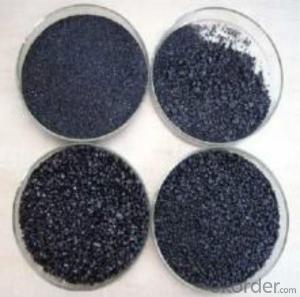FC 99% Calciend Petroleum Coke as Carbon additive
- Loading Port:
- Tianjin
- Payment Terms:
- TT OR LC
- Min Order Qty:
- 20 m.t.
- Supply Capability:
- 2000 m.t./month
OKorder Service Pledge
OKorder Financial Service
You Might Also Like
Brief introduction
Calcined Petroleum Coke comes from delayed coke which extracted from oil refinery. Although Calcined Petroleum Coke contains a little bit higher level of sulfur and nitrogen than pitch coke, the price advantage still makes it widely used during steel-making and founding as a kind of carbon additive/carburant.
BaoSteel is world famous organization. This calcined petroleum coke's raw material is from Bao Steel, which has great quality guarantee. Bao Steel also named this coke as Pitch Coke.
Features
Our product has follwing advantages:
The morphology, chemistry and crystallinity of recarburisers
have a major impact on the overall casting cost. The combined
application and cost benefits, which are derived through the
use of Desulco, enable foundries to manufacture castings in a
highly cost effective manner.
reduces
Recarburiser consumption
Power consumption
Inoculant consumption
MgFeSi consumption
Furnace refractory wear
Scrap rate
Tap to tap time
Slag inclusions risk
Chill
increases
Casting microstructure
Productivity
Process consistency
Specifications
Products | CPC | ||
F.C.% | 98.5MIN | 98.5MIN | 98MIN |
ASH % | 0.8MAX | 0.8MAX | 1MAX |
V.M.% | 0.7 MAX | 0.7 MAX | 1 MAX |
SULFUR % | 0. 5MAX | 0. 7MAX | 1MAX |
MOISTURE % | 0.5MAX | 0.5MAX | 1MAX |
Pictures
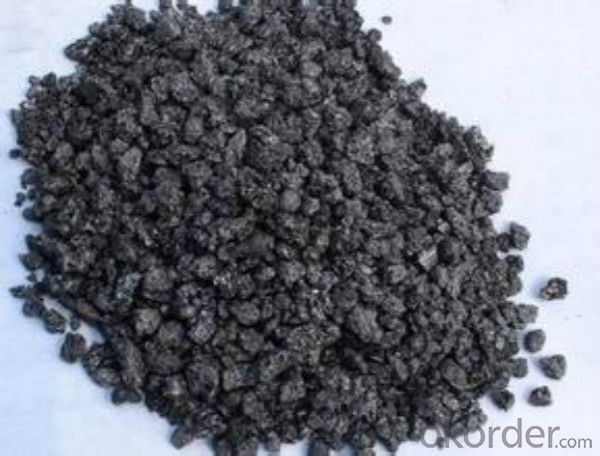
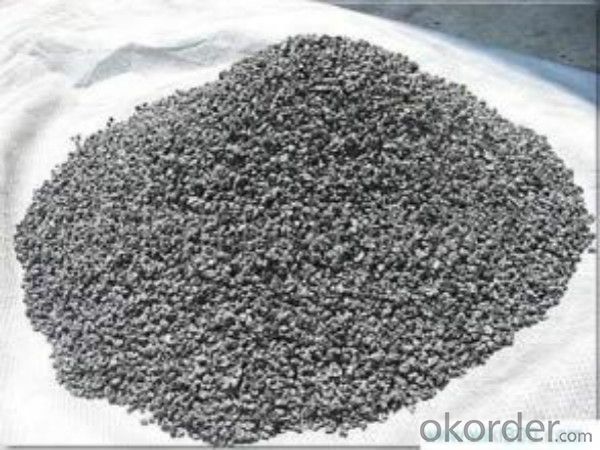
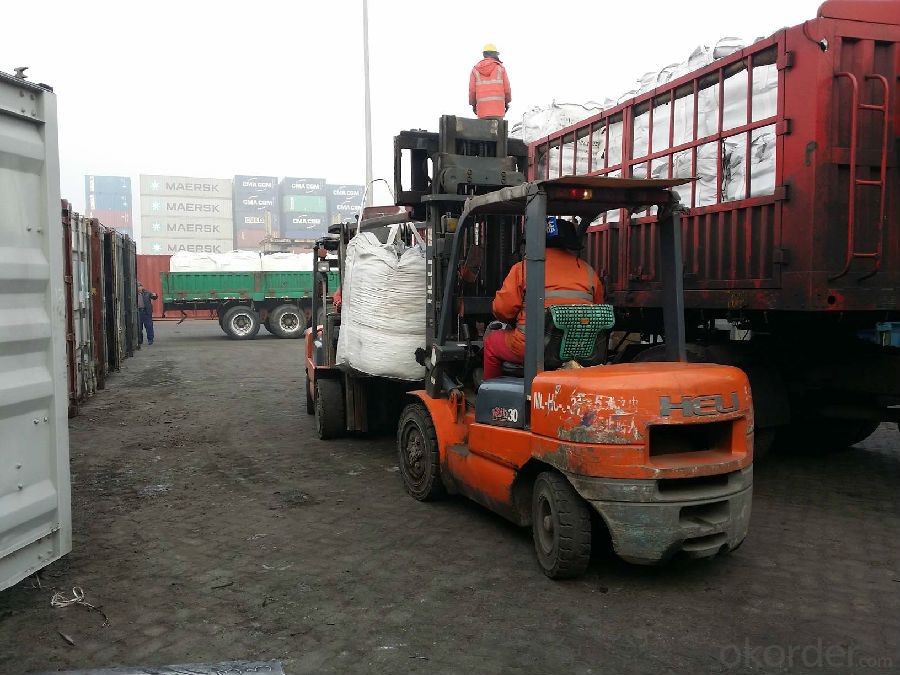
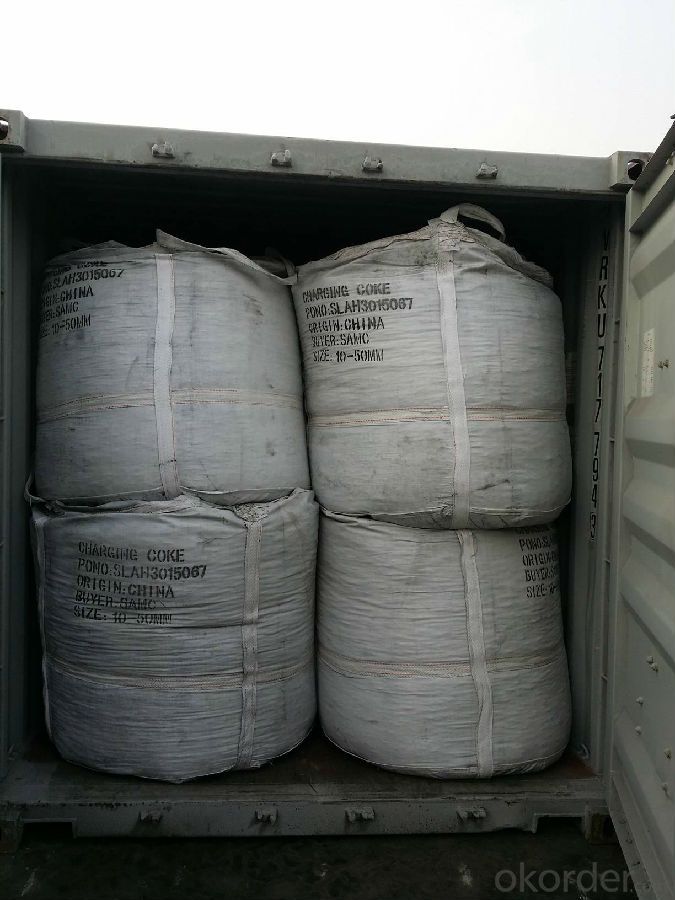
FAQ
1 What is the package?
In jumbo bag with/without pallet
2 What is the delivery time?
25 days after receiving the workable LC or down payment
3 What is the payment term?
T/T, L/C,D/P,D/A
- Q: Method for making carbon fiber board
- Method for making carbon fiber sheet:1, first determine the thickness of the plate to be made2 calculate the required number of plies according to the thickness3, and then according to 0 degrees, 45 degrees, 90 degrees, -45 degrees in the order of stacking.4, and then molding it!Now carbon fiber board, in fact, many in the middle are entrained with some glass fiber cloth, of course, there are all carbon, a little more expensive!
- Q: What are the impacts of carbon emissions on urban environments?
- Carbon emissions have significant impacts on urban environments. One of the most notable effects is air pollution. The release of carbon dioxide and other greenhouse gases from vehicles, factories, and power plants contributes to the formation of smog and harmful particulate matter in cities. This pollution poses serious health risks to residents, particularly those with respiratory conditions, and can lead to increased hospital admissions and premature deaths. Furthermore, carbon emissions contribute to climate change, which has wide-ranging consequences for urban areas. Rising temperatures and changing weather patterns can intensify heatwaves, leading to heat-related illnesses and deaths. Increased frequency and severity of extreme weather events, such as hurricanes and floods, can cause significant infrastructure damage and disrupt essential services like water supply and transportation. Urban areas also face the threat of rising sea levels due to carbon emissions. Coastal cities are particularly vulnerable to flooding and erosion as the melting of polar ice caps and thermal expansion of seawater continue. This can result in the loss of valuable land, displacement of populations, and damage to critical infrastructure, including buildings, roads, and sewage systems. Carbon emissions also contribute to the urban heat island effect, wherein cities experience higher temperatures compared to surrounding rural areas. This is due to the absorption and retention of heat by concrete, asphalt, and other urban materials. The urban heat island effect can exacerbate the health risks associated with heatwaves and increase energy demands for cooling, further contributing to carbon emissions. Finally, carbon emissions have economic impacts on urban environments. The costs of mitigating and adapting to the effects of climate change, such as implementing climate-resilient infrastructure and disaster response measures, can be significant. Additionally, the health consequences of air pollution and extreme weather events can lead to increased healthcare costs and productivity losses. To mitigate these impacts, efforts should be made to reduce carbon emissions through transitioning to cleaner energy sources, promoting sustainable transportation options, and implementing energy-efficient practices in buildings. Urban planning and design should also prioritize green spaces, tree planting, and the use of reflective and permeable materials to combat the urban heat island effect. By addressing carbon emissions in urban environments, we can create healthier, more resilient cities for both current and future generations.
- Q: How are fossil fuels formed from carbon?
- Fossil fuels are formed from carbon through a natural process that takes millions of years. The process begins with the remains of plants and animals that lived millions of years ago. These remains, which contain carbon, get buried under layers of sediment in oceans, swamps, and other bodies of water. Over time, the pressure from the layers of sediment and the heat from the Earth's crust cause a process called diagenesis to occur. During diagenesis, the organic matter in the remains undergoes chemical changes, transforming it into a substance known as kerogen. As more layers of sediment continue to accumulate, the temperature and pressure increase further. Eventually, the kerogen undergoes a process called catagenesis, where it is heated to even higher temperatures. This causes the kerogen to break down and transform into liquid and gaseous hydrocarbons, which are the main components of fossil fuels. The liquid hydrocarbons form what is known as crude oil or petroleum, while the gaseous hydrocarbons form natural gas. Both of these fossil fuels can be extracted from the Earth's crust through drilling. In summary, fossil fuels are formed from carbon through a complex and lengthy process involving the burial, pressure, and heat of organic matter over millions of years. This process transforms the carbon-rich remains into hydrocarbons, which become the valuable resources that we use as fossil fuels today.
- Q: What are the impacts of carbon emissions on the stability of deserts?
- Carbon emissions have a significant impact on the stability of deserts. Increased levels of carbon dioxide in the atmosphere contribute to global warming, leading to higher temperatures and altered precipitation patterns. These changes can intensify desertification processes, such as soil erosion and water scarcity, further destabilizing desert ecosystems. Additionally, carbon emissions from human activities, such as fossil fuel combustion, contribute to air pollution, which can harm desert flora and fauna, disrupting their ecological balance and overall stability.
- Q: How is carbon stored in the Earth's crust?
- Carbon is stored in the Earth's crust through various geological processes such as the formation of sedimentary rocks, the burial of organic matter, and the formation of fossil fuels. These processes involve the accumulation and preservation of carbon-rich material over millions of years, resulting in the storage of carbon in the form of minerals, organic compounds, and hydrocarbons within the Earth's crust.
- Q: What is carbon nanocomposite coating?
- Carbon nanocomposite coatings, composed of carbon nanotubes or other carbon-based nanoparticles dispersed within a matrix material like polymer or metal, serve as a protective coating for diverse surfaces. The primary goal of these coatings is to enhance the mechanical, thermal, and electrical properties of the material being coated. By incorporating carbon nanoparticles, the coating gains strength, hardness, and wear resistance, resulting in increased durability. Furthermore, it exhibits exceptional resistance to corrosion, making it suitable for use in severe environments. A key advantage of carbon nanocomposite coatings lies in their ability to offer multifunctional properties. For instance, they can be engineered to possess high electrical conductivity, making them ideal for electronics and electrochemical devices. Additionally, they can exhibit high thermal conductivity, making them valuable for dissipating heat in electronic devices or as a thermal barrier coating. Moreover, carbon nanocomposite coatings have demonstrated promising outcomes in various sectors such as aerospace, automotive, energy, and healthcare. In aerospace, they enhance the performance and longevity of aircraft components. In the automotive industry, they provide anti-scratch and self-cleaning capabilities. In energy applications, they improve solar panel efficiency and protect oil and gas pipelines from corrosion. In healthcare, they enable drug delivery, act as antibacterial coatings, and facilitate bio-sensing applications. In summary, carbon nanocomposite coatings offer a wide array of advantages, including enhanced mechanical and electrical properties, corrosion resistance, and multifunctionality. With continuous research and development, these coatings hold immense potential for different industries, providing innovative solutions to address their unique requirements and challenges.
- Q: What is the most common isotope of carbon?
- Carbon-12, the most prevalent carbon isotope, derives its name from its atomic mass of 12 atomic mass units, determined by the composition of protons and neutrons in its nucleus. It dominates the natural abundance of carbon, comprising approximately 98.9% of all carbon atoms. In contrast, carbon-13 and carbon-14, the other two carbon isotopes, occur in lesser quantities and proportions. Being stable and resistant to radioactive decay, carbon-12 holds great significance as a vital element for sustaining life on our planet.
- Q: Who can explain that bare feet on fire carbon don't burn feet?
- These two substances are edible, containing in the mouth is naturally very safe, plus cinnabar is red, and dissolve it in the water, this red holy water is more mysterious.From time to time to the fire scattered in the "law" law of water spray powder "and" add before have feet soaking in full dissolution of cinnabar and borax "holy water", which is on the fire and carbon between your feet to form a thin protective layer of "sand", which has scientific significance, is is that all the fairies and the real reason for lossless hair or.The world is material. A scholar once said, "what is a ghost?" Some phenomena that cannot be explained by science are ghosts in our hearts. If we can continue to search in the way of science, ghosts will leave us!
- Q: What is carbon fiber and how is it used?
- Carbon fiber is a lightweight and incredibly strong material that is made from thin strands of carbon atoms bonded together in a specific pattern. It is known for its exceptional strength-to-weight ratio, making it significantly stronger than steel while being much lighter in weight. Carbon fiber is used in a wide range of industries and applications due to its unique properties. In the aerospace industry, it is commonly used to build aircraft components such as wings, fuselage sections, and engine parts. Its high strength and low weight help increase fuel efficiency and enhance overall performance. The automotive industry also extensively utilizes carbon fiber in the production of high-performance vehicles. Carbon fiber reinforced composites are used to manufacture various parts, including body panels, chassis components, and interior trims. The use of carbon fiber in automobiles not only reduces the overall weight of the vehicle, but also improves its structural integrity and enhances handling and fuel efficiency. Sports equipment manufacturers incorporate carbon fiber in the production of sporting goods such as tennis rackets, golf clubs, bicycles, and hockey sticks. The material's strength and stiffness allow for enhanced performance, increased power transfer, and improved durability. In addition, carbon fiber finds applications in the construction industry for reinforcing concrete structures, as well as in the manufacturing of wind turbine blades, boat hulls, and various other industrial components. Overall, carbon fiber's exceptional strength, lightweight nature, and versatility make it a preferred choice in industries where high-performance materials are required. Its use continues to expand as advancements in manufacturing techniques and cost reduction efforts make it more accessible to a wider range of applications.
- Q: What is the boiling point of carbon?
- The boiling point of carbon, a nonmetallic element, depends on its allotrope. Carbon has multiple allotropes, including graphite and diamond, each with different physical properties. Graphite, which consists of layers of carbon atoms arranged in a hexagonal lattice, does not have a boiling point since it sublimes directly from a solid to a gas. On the other hand, diamond, which is composed of carbon atoms arranged in a three-dimensional lattice, also does not have a boiling point as it undergoes direct sublimation. Therefore, carbon does not have a boiling point in its pure elemental form.
Send your message to us
FC 99% Calciend Petroleum Coke as Carbon additive
- Loading Port:
- Tianjin
- Payment Terms:
- TT OR LC
- Min Order Qty:
- 20 m.t.
- Supply Capability:
- 2000 m.t./month
OKorder Service Pledge
OKorder Financial Service
Similar products
Hot products
Hot Searches
